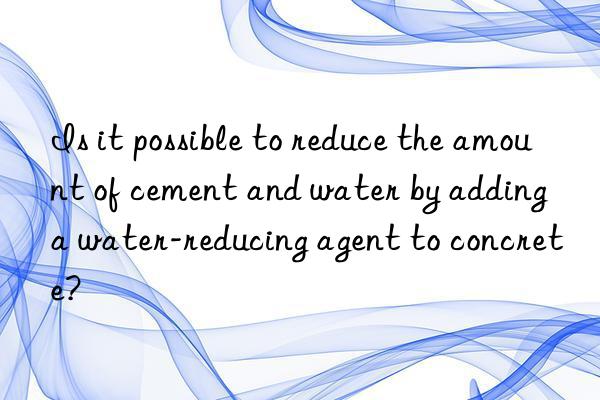
Everyone knows that water-reducing agents have the effect of reducing water, so for example, the mix ratio I calculated is: cement 300: sand: 160: gravel: 1000: water 120: Water reducing agent: %1.5. If the water reducing rate of the water reducing agent is 20%, then my mix ratio should not be: cement 300: sand: 160: gravel: 1000: water 96?
If this is the case, then the water-cement ratio has changed. Is this okay? Or should we keep the water-cement ratio unchanged and reduce the amount of cement according to the initial mix ratio? Or should we not change the amount of cement and water at all to increase the slump of concrete and facilitate construction? Please give me some advice, thanks?
1. First of all, I have to point out that the mix ratio you gave as an example above is completely unacceptable. Although it is an example, it must be realistic.
2. For the design of concrete mix ratio, it is recommended that you refer to the ready-mixed concrete design regulations. It will teach you the methods and main key points of mix ratio design. It is nothing more than based on The cementing material (mainly cement) determines the water-cement ratio, the water-reducing rate of the water-reducing agent and the original water to determine the water consumption, the water consumption and the water-cement ratio determine the cementing material usage, the total weight of the sand and gravel is determined based on the bulk density, and the total weight of the sand and gravel is determined based on the water consumption and water-cement ratio. Determine the respective amounts of sand and gravel according to the weight and sand rate, and then make adjustments through trial mixing.
3. It is particularly pointed out that the water-cement ratio determined by the strength grade of cement will generally not change, but it can be slightly adjusted according to the actual material conditions, etc. The general design The mix ratio corresponding to the strength grade of concrete has already considered the slump to calculate the original water consumption, so the slump of the concrete designed after adding admixtures is also the same.
I would like to know whether it is necessary to reduce the amount of water or cement after adding admixtures, or whether there is no need to reduce the amount of water and cement at all?
Yes, let me give you an example: if the amount of cement is 440 and water is 220 without water-reducing agent, that is, the water-cement ratio is 0.5. If the water-reducing agent is reduced If the water rate is 20%, the designed water consumption becomes 220×(1-20%)=176. If the water-cement ratio remains unchanged, the cement consumption =176/0.5=352.
</p

 微信扫一扫打赏
微信扫一扫打赏

